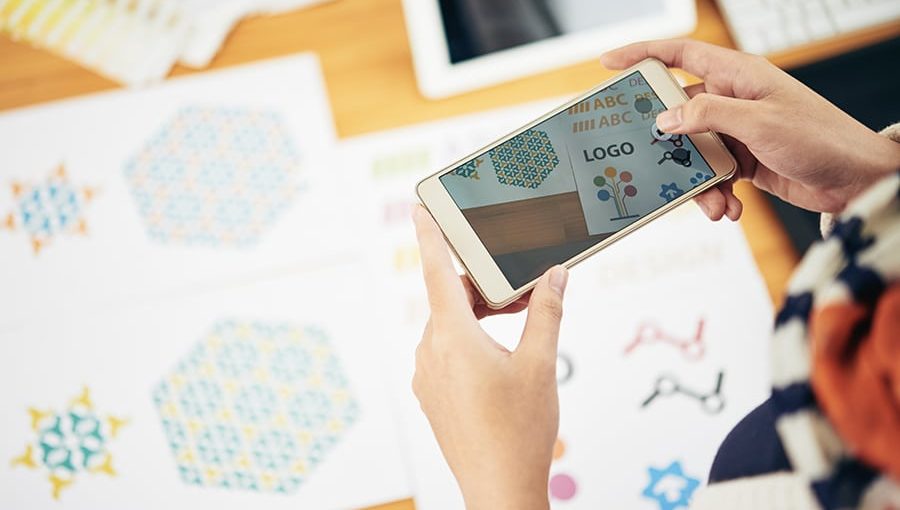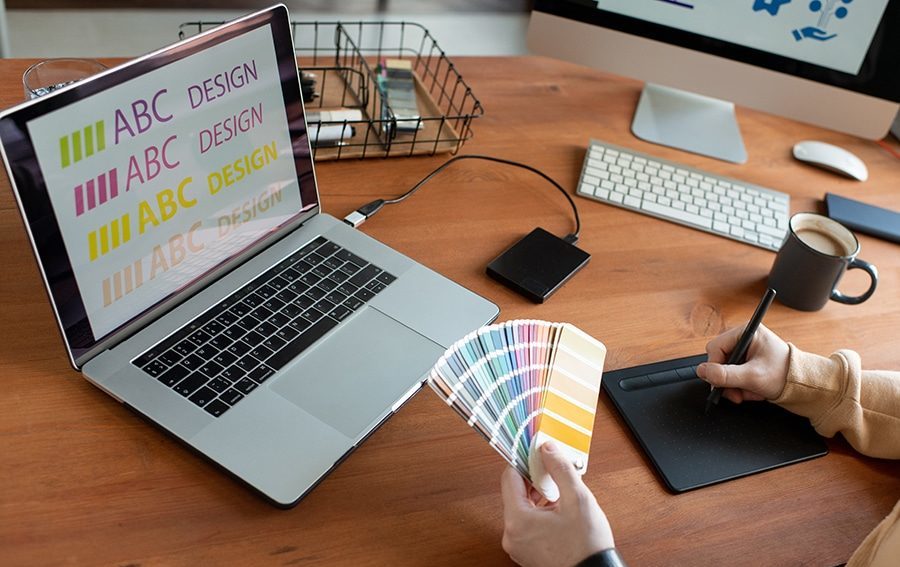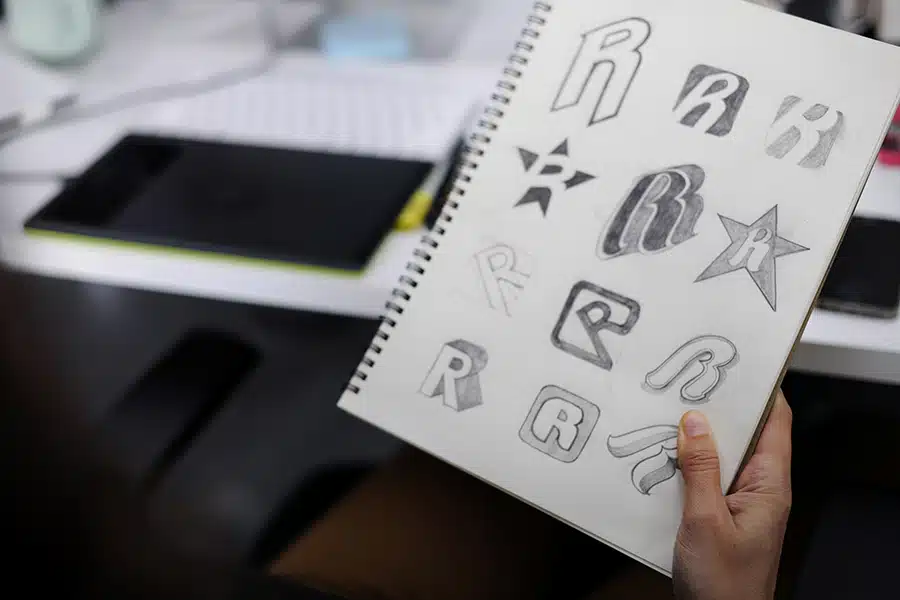Table of Contents
What Is Brand Identity And How To Develop a Great One
Creating and maintaining a brand identity is paramount to differentiate your business from the hundreds (or even thousands!) of competitors out there. And, if you’re reading this article, you probably know that you need more than a pretty logo and matching colors to design a robust identity. But exactly how are you supposed to achieve that?
If you’ve ever wondered “what is brand identity?” and want to know how to develop the perfect one for your business, just keep reading this piece. You’ll also discover why it plays such a key role in any effective digital marketing campaign 😉.
Now, without further ado, let’s jump right into it!
Table of Contents
Brand, Branding, Brand Identity: Which Is Which?
You’ve probably heard the terms brand, branding, and brand identity a million times, and since they’re so similar, it’s easy to confuse them. But that shouldn’t be the case! Let me briefly define each one, so we get things started on the right foot.
On the one hand, your brand is the meaning behind your business. Think of it as how your customers perceive your company, the “personality” you create for them to associate you with. Your brand is intangible and more of an emotional concept.
On the other hand, branding is a marketing practice. It refers to the process of actively and strategically working to shape people’s perception of your brand and achieve your desired image. Using branding strategies, you can express exactly what your brand represents, from its values to its purpose and personality.
Lastly, your brand identity refers to the tangible, visual elements that make up your brand, like your logo or your characteristic color palette. A good brand identity design makes your customers instantly recognize your business and differentiate it from its competitors.
But I’ll go over the design aspect in a bit. First, let’s put our focus on how to develop awesome identity branding for your business!
How to Create a Great Brand Identity
Before jumping straight into the visual elements of your identity, you need to establish the basics of who you are as a brand, the “personality” I mentioned before.
Think of it this way: if you want to portray a certain image, you first need to establish the values behind it. You can’t look the part if you’re not sure what you stand for!
So, just like any person has a personality, composed of different elements that make them unique, your brand also needs to have some key characteristics that differentiate it from the rest. These characteristics include the following:
- Your mission statement. Why did it all start in the first place? What do you ultimately want to achieve?
- Your brand values. What is the driving force behind everything you do as a company? What do you stand for?
- Your positioning. What are you doing to actively differentiate your brand from the thousands of others out there?
- Your voice and your message. What are you communicating as a brand, and how do you do it?
Having a deep understanding of these features is crucial to building a strong brand identity. They’re the foundation upon which everything you do as a business is built, so it needs to be clearly defined before going any further.
Brand Identity Design: The Basics
Once you’ve determined the intangible, emotional elements that make up your business, you can start developing an identity design that matches them perfectly.
At this point, it’s time to define the three main components of your identity design: your typography, your color palette, and your shapes.
Let’s break them down.
Typography
It might seem like an exaggeration, but the fonts you choose for your brand identity design can say many things about it. There are five major types of typography, and each of them conveys a different message:
- Serif fonts, like the ever-popular Times New Roman, are fonts that have little “feet” at the end of each character. They’re the oldest and most classic types of fonts, so if you want to portray your brand as traditional and classy, they’re your best choice.
- Sans serif fonts, on the other hand, are fonts without the little feet (if you took French in high school, you probably already guessed it!). They have smooth edges, and the line thickness is even from one end to the other. These fonts give a clean and modern look to your brand.
- Slab fonts can be identified right away by their blocky serifs. They’re the font used on old-school typewriters, so if you ever used one, you probably remember them. Slab fonts are old-school but also bold, so it’s best to use them for logos or headers, and not long paragraphs of text.
- Script fonts, like Allura, look like cursive handwriting. Just like real handwriting, there are many types of script fonts, from the highly decorative ones used in fancy invitations to the more toned-down which imitate real cursive. If you market primarily to women, choosing these fonts can give a feminine feeling to your brand.
- Decorative or display fonts are hard to pin down to just one category. They are highly stylized, and each has a particular element to it that makes it stand out from the other major types of fonts. They can have unusual shapes and shadows, or even look hand-drawn. Just like slab fonts, this type is best used in logos, since they’re more of a statement and not meant to be used in long texts.
Color Palette
Next in line for the key components of any brand identity design, we have color palettes. Color can have a strong impact on how your brand is perceived by customers since we associate different colors with different moods and topics.
While the psychology behind colors is not an exact science, do some research about the colors most commonly used in your niche and the meanings they can have. I can’t tell you which will work best for your brand, but I can tell you how to best pick a color palette for it! Let’s see:
- First, pick a primary color. This is the color that will instantly identify your brand, like Coca-Cola’s red or Tiffany’s blue. It will be the main protagonist in all your products and collateral, both digital and print.
- Then, choose your secondary colors (anywhere from two to four is fine). Usually, secondary colors are one shade darker or lighter than the primary color. They will complement your primary without diverting attention from it.
- Finally, pick neutral colors. Don’t overlook them! They will be used in your backgrounds and font colors as a way to balance out the bold primary and secondary colors.
Shapes
Lastly, it’s important to choose wisely when it comes to the forms and shapes that will identify your brand. Maybe you think I’m being over the top, but they truly can elicit different reactions in your customers (ever heard of the Bouba/Kiki Effect?):
- Round shapes are associated with ideas of community, friendship, and unity. They can give a wholesome and safe vibe to your brand.
- Straight-edge shapes evoke feelings of strength, balance, and professionalism. Keep in mind they should be paired with something light-hearted, like bright colors, so they don’t feel too impersonal.
Even the orientation of your lines can have psychological implications. Vertical lines are most often associated with masculinity and strength, while horizontal lines inspire feelings related to calm and community.
Bringing Your Brand Identity Design to Life
Once you’ve determined your characteristic fonts and colors, you can start working on your design assets and bring your identity design to life.
Your logo, website, product packaging, email design, and everything related to your brand should have a consistent and well-thought-out look. Using the same visual style across all tangible assets will ensure your brand identity is being recognized and remembered by your customers.
As a final piece of advice before we say goodbye, I want to emphasize the importance of having a brand style guide. This document details exactly what your brand identity is made up of, how the design assets should be used, and helps maintain a consistent identity branding. So, you should definitely have one of your own!
Wrapping Up
Well, we’ve come to the end of this piece! I hope you enjoyed reading it as much as I enjoyed writing it 😄.
Remember, your identity design is important, but so is the meaning behind your brand. To accurately craft a brand identity, you first need to define what your design represents. This way, you can develop a cohesive brand identity that sets you apart from the competitors and makes you instantly recognizable to current and potential customers.
Now it’s time to start working and creating a brand identity that takes your business to the next level!






